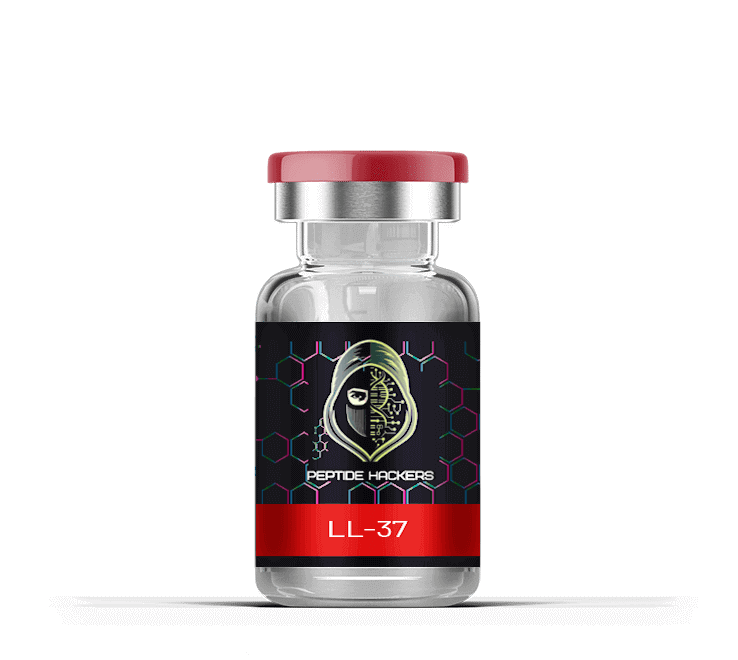The Role of Peptides in Muscle Growth and Recovery

The Top Peptides for Muscle Growth: Benefits, Risks, and What You Need to Know
Introduction
If you’re serious about fitness muscle strength, and building muscle, you’ve likely heard about peptides for muscle growth. These small chains of amino acids are gaining popularity among athletes and bodybuilders because they help with muscle growth, speed up recovery, and boost overall physical performance.
Whether your goal is to build muscle, increase lean muscle mass, or recover faster after intense workouts, understanding how peptides work is key. In this guide, I’ll dive into the benefits of popular peptides for muscle growth like BPC-157, TB-500, GHRP-2, CJC-1295, and Hexarelin. Plus, I’ll share tips on how to use them effectively to boost muscle growth and achieve your fitness goals.
What Are Peptides?
Peptides are short chains of amino acids, the building blocks of proteins. Though small, these molecules pack a punch when it comes to muscle growth and recovery because they interact directly with your body’s systems.
For example, collagen peptides are well-known for supporting joint and skin health, but they also play a big role in muscle repair by boosting collagen synthesis. Peptide supplements, including collagen peptide supplements, can further enhance muscle growth and recovery. Essentially, collagen peptides are crucial for muscle development—they help your body build and repair muscle tissue after every workout.
The Role of Peptides for Muscle Growth
When you work out, especially with resistance training, your muscles experience tiny tears. That might sound bad, but it’s actually a good thing—those tears are the first step toward muscle growth.
Your body repairs these micro-tears by building new muscle tissue, a process driven by protein synthesis, which is essential for muscle development. Peptides can enhance this process, speeding up muscle growth and leading to increased muscle mass and strength.
Peptides and Growth Hormones
Certain peptides, like GHRP-2, CJC-1295, and Sermorelin, can increase the release of growth hormones, which are crucial for muscle building. These growth hormone releasing hormone (GHRH) analogs stimulate your pituitary gland to produce more growth hormones, boosting protein synthesis for muscle building and improving muscle recovery.
As a result, your muscles repair and grow faster, helping you reach your fitness goals more effectively. This is why peptide therapy is popular among athletes who want to optimize muscle growth resistance training, and overall physical performance.
Top Peptides for Muscle Growth
Several other peptides that stand out for their effectiveness in muscle growth. Let’s break down the top ones:
BPC-157: Known as the Body Protective Compound, BPC-157 is famous for its healing properties. It helps with muscle repair and wound healing by promoting collagen synthesis. BPC-157 is particularly good for muscle recovery and reducing body fat, which can improve your overall body composition.
TB-500: TB-500 is another powerful peptide, especially for muscle recovery. It helps move individual amino acids and cells to areas that need repair, speeding up the healing process. TB-500 also enhances muscle tissue flexibility and reduces stiffness, which can lower your risk of injury during intense workouts.
GHRP-2: GHRP-2 is a growth hormone secretagogue that stimulates the release of growth hormones from the pituitary gland. This boost in growth hormones leads to better protein synthesis, directly contributing to muscle growth and increased muscle mass. GHRP-2 is also known for improving sleep quality, which is crucial for muscle recovery and overall physical performance.
CJC-1295: CJC-1295 is a peptide that helps keep growth hormones at high levels over a longer period. This sustained release supports ongoing muscle development and muscle hypertrophy. CJC-1295, along with other peptides like GHRP-2, stimulates the release of human growth hormone, which is crucial for muscle growth and enhancing physical performance.
Hexarelin: Hexarelin is one of the most potent growth hormone-releasing peptides (GHRPs). It significantly boosts growth hormone levels, promoting lean muscle growth and aiding in fat loss. Hexarelin also has positive effects on heart health and muscle recovery, making it a solid choice for athletes focused on long-term health and performance.
Collagen Peptides for Joint Health and Muscle Recovery
Collagen peptides are often associated with skincare, but they’re also fantastic for joint health and to promote muscle growth and recovery. These peptides promote collagen synthesis, which helps repair and maintain the tissues in your joints and muscles. This makes collagen peptide supplements especially valuable for athletes who want to protect their joints while supporting muscle growth and recovery.
Taking Peptide Supplements to Boost Muscle Growth
When it comes to fitness supplementation, taking peptide supplements can play a crucial role in achieving your fitness goals. They work not only to enhance muscle growth but also to improve energy levels and overall physical performance.
By incorporating peptides into your routine, you can boost muscle growth and support your body's ability to recover and build muscle more effectively. As with any dietary supplements, it’s important to use them correctly and under proper guidance to maximize their potential health benefits.
Benefits of Using Peptides for Muscle Growth
Using peptides for muscle growth comes with several advantages:
Faster Muscle Repair: Peptides speed up muscle repair, so you can recover quicker after intense workouts.
Increased Muscle Mass: By enhancing protein synthesis and growth hormone release, peptides contribute to significant muscle growth and strength.
Improved Fat Loss: Certain peptides, like Hexarelin and BPC-157, help reduce body fat, improving your overall body composition.
Enhanced Joint Health: Collagen peptides support joint health, reducing the risk of injury during training.
Potential Risks and Side Effects
While peptides offer plenty of benefits, they’re not without risks. Here are some potential side effects:
Hormone Imbalances: Overusing peptides can throw your natural hormone levels out of balance.
Joint Pain: Some people experience joint pain, especially with growth hormone-releasing peptides.
Injection Site Reactions: Redness, swelling, or irritation at the injection site is fairly common.
Dependency: If you use peptides without taking breaks, your body might become dependent on them. That’s why it’s important to use peptides in cycles.
How to Use Peptides for Optimal Muscle Growth
To get the most out of peptides, you need to use them correctly:
Start with the Right dosage: Begin with the recommended dosage and adjust as necessary, ideally under medical supervision.
Use in Cycles: A typical peptide cycle lasts 8 to 12 weeks, followed by a 4 to 6-week break. This approach helps prevent dependency and gives your body time to reset.
Monitor Your Body’s Response: Pay attention to how your body responds to peptides. If you notice any side effects, talk to a healthcare professional.
The Importance of Medical Supervision
When it comes to using peptides for muscle growth, medical supervision is a must. A healthcare provider can help you find the right dosage and cycle for your specific needs, ensuring you get the benefits without the risks.
This is especially important if you’re thinking about stacking multiple peptides or if you have any pre-existing health conditions. Medical supervision makes sure your peptide use is safe and effective.
Peptides vs. Steroids: What’s the Difference?
Both peptides and steroids can help build muscle, but they work very differently. Anabolic steroids involve synthetic hormones that can cause serious side effects, like hormone imbalances and liver damage.
Peptides, on the other hand, encourage your body to naturally produce more growth hormones. This promotes muscle growth and recovery without the harsh side effects associated with steroids. Plus, peptides are more versatile—you can use them to target specific fitness goals like muscle gain, weight loss, fat loss, or overall physical performance.
Peptide Stacking for Bodybuilding: Maximizing Gains
Peptide stacking is all about combining different peptides to get better results in muscle growth and recovery. For instance, stacking CJC-1295 with GHRP-2 can lead to a bigger increase in growth hormone levels, which helps you build muscle and reduce body fat more effectively.
However, it’s crucial to approach peptide stacking with caution. It’s best to do it under the guidance of a healthcare professional since the combined effects can be complex and need careful management.
Average Peptide Cycle
To avoid dependency, it’s important to use peptides in cycles. A typical cycle might last 8 to 12 weeks, followed by a 4 to 6-week break. This allows your body to reset and reduces the risk of becoming dependent.
During your cycle, keep an eye on how your body is responding and make adjustments as needed. Always consult a healthcare provider before starting or adjusting a peptide cycle to ensure you’re using them safely and effectively.
Safe Use of Peptides: What You Need to Know
Safety is key when using peptides. Start with the recommended dosage and don’t exceed it unless your doctor advises otherwise. Also, store your peptides properly—keep them in a cool, dry place like a refrigerator to maintain their effectiveness.
If you’re considering peptide therapy, make sure to consult with a healthcare provider. This ensures that the therapeutic peptides are suitable for your specific needs and goals. And remember, using peptides in cycles helps prevent your body from becoming dependent on them.
Side Effects of Peptides: What to Watch Out For
Peptides can be very beneficial, but they can also have side effects. Some common ones include hormone imbalances, joint pain, and irritation at the injection site, like redness or swelling.
Another concern is dependency. If you use these peptides for muscle, continuously without breaks, your body might start to rely on them, which isn’t ideal. To avoid this, always use peptides in cycles. If you notice anything unusual, consult a healthcare professional.
Legal Status of Peptides: What You Should Know
The legal status of peptides can vary depending on where you live. In some places, peptides are legally available for research purposes but aren’t approved for human consumption. It’s important to check your local laws before buying or using peptides to avoid any legal issues.
Conclusion
Peptides are changing the game for athletes and bodybuilders looking to enhance muscle growth and recovery. With options like BPC-157, TB-500, GHRP-2, CJC-1295, and Hexarelin, there’s a peptide to help you meet almost any fitness goal. But like any powerful tool, they need to be used wisely.
To get the most out of peptide therapy, you need to know how to use them safely, understand the right dosages, and be aware of potential side effects. If you’re serious about boosting your muscle growth and recovery, peptides could be the key to unlocking your full potential.
Disclaimer
Peptide Hackers sells peptides for research purposes only. Our products are intended for laboratory research and in vitro testing only and are not for human or animal use. Bodily introduction into humans or animals is strictly prohibited by law. Our products should be handled by licensed, qualified professionals. Misuse, including misbranding or use as drugs, food, or cosmetics, is prohibited. The information provided on our website is for educational purposes only and should not be used for unauthorized applications.


